The allure of diamonds extends beyond their beauty and status as precious gems. These stunning crystals possess innate characteristics that have been the cornerstone of technological advancements. In this light, the world of Diamond-Like Carbon (DLC) coating emerges, fusing the robustness of diamonds with contemporary products and applications. But the question remains: what is DLC coating, and why is it regarded as a game-changer in numerous industries?
The Fundamentals: What is DLC Coating?
Diamond-Like Carbon (DLC) coating is a groundbreaking innovation in the realm of surface protection and enhancement. This technology, while not directly extracted from diamonds, offers an array of characteristics similar to these revered gems.
At its core, DLC coating consists of amorphous carbon. Unlike crystalline structures where atoms are systematically aligned, in amorphous carbon, they lack a consistent pattern. This unique atomic arrangement is fundamental to the characteristics and benefits of DLC coating.
- Similar Hardness to Diamonds: Among the hardest materials known, diamonds set a high bar for hardness. DLC coatings achieve a comparable hardness, offering exceptional wear resistance.
- Low Friction Coefficient: DLC coatings drastically reduce friction, crucial for components that need smooth movements and interactions, such as engine parts or medical devices.
- Glossy Finish: Aesthetically, DLC coatings can impart a reflective, polished finish akin to diamonds, enhancing the visual appeal of the coated item.
What Are the Different Types of DLC Coatings?
DLC coatings aren’t just one-size-fits-all. They come in several forms, each tailored for specific applications: There are four types of DLC coatings: amorphous carbon DLC with both sp3 (diamond) and sp2 (graphite) bonds, hydrogenated amorphous carbon which is softer and more suitable for specific applications, tetrahedral amorphous carbon known for its high sp3 content and exceptional hardness, and metal-doped DLC where metal elements are added to modify its properties.
Table: Types of DLC Coatings and Their Characteristics
| Type | Description | Key Features |
|---|---|---|
| a-C | Amorphous carbon DLC | Combination of sp3 and sp2 bonds |
| a-C:H | Hydrogenated amorphous carbon | Softer, tailored for specific applications |
| ta-C | Tetrahedral amorphous carbon | High sp3 content, exceptional hardness |
| a-C:Me | Metal-doped DLC | Modified properties due to added metal elements |
DLC coatings have unique properties that make them useful in various fields. In the automotive industry, they can reduce wear in engine parts and improve fuel efficiency. In the medical field, they can be used to create biocompatible surgical instruments. In electronics, they can help ensure the longevity and efficiency of connectors and switches.
The DLC Coating Process: What Are the Steps?
The DLC coating process is a meticulous and multifaceted operation that transforms regular surfaces into robust, wear-resistant, and low-friction entities. Delving deeper into this process, we uncover the stages, techniques, and decisions that play pivotal roles in achieving the desired results.
Step 1: Preliminary Surface Preparation
Before the actual coating process begins, the object to be coated undergoes extensive preparation to ensure optimal DLC deposition.
The first step involves cleaning the substrate to remove any dirt, grease, or oxide layers. Common cleaning methods include ultrasonic cleaning, acid etching, or plasma cleaning. Additionally, for better adhesion, the substrate surface is sometimes roughened using processes like grit blasting or ion bombardment. In certain cases, the substrate may undergo a pre-heating process to enhance the DLC coating’s performance and adherence.
Step 2: Deposition Phase
This is the heart of the DLC coating process. The choice of method depends on the desired properties of the final product, the substrate material, and the intended application. ****Physical Vapor Deposition (PVD) ****involves physically transferring material from a source to the substrate. During PVD, a carbon target is bombarded with ions, which eject carbon atoms. These atoms then deposit onto the substrate to form the DLC coating. PVD can be conducted at relatively low temperatures and offers a broad range of substrate materials.
On the other hand, in chemical Vapor Deposition (CVD), gaseous precursors are introduced into a chamber containing the substrate. Through chemical reactions, these gases decompose, and the resulting carbon atoms bond to the substrate, forming a DLC layer. It can produce thicker coatings and is effective for complex geometries.
Factors Influencing the Choice of Deposition Technique
While PVD and CVD are the primary methods, the decision on which to use hinges on several factors:
- Substrate Material**:** Some materials might be sensitive to higher temperatures used in certain CVD processes, making PVD a more suitable choice.
- Desired Coating Thickness: CVD can often produce thicker coatings compared to PVD.
- Object Geometry: Complex geometries might benefit more from CVD, which offers more uniform deposition on intricate surfaces.
- End Application: Depending on where the coated product will be used (e.g., high-stress environments, medical applications), one method might be more advantageous over the other.
Step 3: Post-coating Treatment
Once the DLC coating is applied, additional treatments may be necessary to refine the coating or impart specific desired properties.
- Annealing: The coated object is heated in a controlled environment to relieve stresses and improve the coating’s hardness and adhesion.
- Polishing: To achieve a smooth, glossy finish, some DLC-coated surfaces undergo polishing.
- Quality Inspection: Ensuring the coating’s uniformity, thickness, and adhesion is crucial. Techniques like microscopy, scratch testing, and Rockwell hardness testing can be employed.
Table: DLC Coating Process and Techniques
| Stage | Techniques & Methods | Key Points & Advantages |
|---|---|---|
| Preliminary Preparation | Ultrasonic cleaning, Acid etching, Grit blasting | Ensures optimal adhesion and performance |
| Deposition Phase | PVD (Physical Vapor Deposition), CVD (Chemical Vapor Deposition) | The choice depends on the substrate material, desired properties, and intended application |
| Post-coating Treatment | Annealing, Polishing, Quality Inspection | Refinement of the coating, ensuring optimal performance and appearance |
Machinery Behind DLC Coating
The transformative benefits of Diamond-Like Carbon (DLC) coatings wouldn’t be possible without the advanced machinery that facilitates its deposition. This machinery, embodying cutting-edge science and precision engineering, plays a pivotal role in ensuring the quality and consistency of DLC coatings across various applications. Let’s delve deeper into the machinery that makes this all possible.
1. Physical Vapor Deposition (PVD) Machines:
PVD is a vacuum deposition technique where the material transitions from a condensed phase to a vapor phase and then back to a condensed phase to form a thin film. Physical Vapor Deposition (PVD) is one of the primary methods used to deposit DLC coatings on various substrates with high precision and consistency. PVD can achieve coating thicknesses ranging from a few nanometers to several micrometers.
PVD machines have high-vacuum chambers, target materials, and substrate holders, enabling the deposition of thin DLC layers on various substrates. PVD techniques offer precise, consistent thin DLC layers and are useful in industries such as automotive, medical, and electronics, among others.
2. Plasma Assisted Chemical Vapor Deposition (PACVD) Machines:
PACVD uses plasma to assist in the deposition of the film on the substrate. Plasma helps in breaking down the gas molecules to reactively deposit the desired coating.
These machines have a vacuum chamber, gas inlets, and a plasma generation system, which help to break down gas molecules and deposit the desired coating. PACVD is particularly useful for ensuring even deposition on complex-shaped parts and tools, and its processes typically operate at temperatures between 200°C to 500°C.
3. Cathodic Arc Deposition Machines:
The cathodic arc deposition machine is a type of machinery used in DLC coating that uses arc discharge to strike the target material, leading to the evaporation of the material, which is then deposited on the substrate. The machine has a vacuum chamber with cathodes made of the target material, anode and magnetic field generators, and substrate holders.
It provides high deposition rates and dense DLC coatings suitable for demanding applications and can achieve deposition rates 10 times faster than traditional PVD methods.
4. Laser Deposition Machines
Laser deposition uses high-intensity lasers to evaporate the target material, which is then deposited on the substrate to form a DLC coating The key features of laser deposition machines include a vacuum or controlled atmosphere chamber, high-intensity laser systems, and rotating substrate holders.
In real-world impact, it ****Offers precise control over the coating process, making it suitable for specific high-precision applications Laser deposition can achieve spot sizes as small as 20 micrometers, allowing for intricate detailing.
Table: Key Machinery Behind DLC Coating
| Machine Type | Key Features | Real-world Impact | Statistical Insight |
|---|---|---|---|
| PVD Machines | High-vacuum chamber, Target materials, Substrate holders | Precise, consistent thin DLC layers | Coating thickness: nanometers to micrometers |
| PACVD Machines | Vacuum chamber, Gas inlets, Plasma system, Substrate holders | High-quality DLC on complex shapes | Operating temperatures: 200°C to 500°C |
| Cathodic Arc Deposition Machines | Vacuum chamber, Cathodes, Anode, Magnetic field, Substrate holders | Dense DLC coatings, high deposition rates | Deposition rates: 10x faster than PVD |
| Laser Deposition Machines | Vacuum/atmosphere chamber, Lasers, Rotating substrate holders | Precise control, suitable for high-precision applications | Spot sizes: as small as 20 micrometers |
The machinery behind DLC coating is as essential as the science of the coating itself. It’s the synergy of advanced techniques and precision machinery that enables the myriad benefits of DLC coatings. As industries continue to evolve, the machinery will adapt, making DLC coatings more efficient, customizable, and applicable to an even broader range of scenarios.
What Are the Benefits of DLC Coating?
The allure of Diamond-Like Carbon (DLC) coating is not only rooted in its name but primarily in its remarkable properties. When a technology consistently finds applications across diverse sectors, from the engines of supercars to the precision instruments of surgeries, it becomes vital to understand the inherent advantages it brings. Let’s unpack the multifaceted benefits of DLC coating.
1. Unmatched Hardness & Wear Resistance
Hardness is a measure of a material’s resistance to deformation. DLC coatings exhibit hardness values comparable to that of natural diamonds, making them a top choice for wear-intensive applications.
DLC coatings have real-world impacts for industries, such as reducing downtime due to equipment wear and tear, leading to cost savings and increased efficiency. DLC coatings can achieve hardness levels up to 80 GPa, which is comparable to the hardness of natural diamonds, which hover around 100 GPa.
2. Reduction in Friction
The term “low friction” might sound mundane, but in the world of machinery and mechanical applications, it’s a game-changer. DLC coatings have a low coefficient of friction, often even lower than Teflon.
In automotive engines, reduced friction translates to improved fuel efficiency and extended engine life. In medical devices, it ensures smoother operations, potentially minimizing tissue damage. Typical DLC coatings can exhibit friction coefficients as low as 0.01 to 0.2, depending on the specific type and application.
3. Corrosion and Oxidation Resistance
Corrosion, the gradual destruction of materials by chemical reactions, can be a significant problem, especially for metals. DLC coatings provide a protective barrier against corrosive elements. Industries that face challenges due to corrosive environments, such as marine or chemical industries, can benefit immensely. The longevity of their tools and machinery can be extended, ensuring consistent performance and safety.
While exact numbers vary, DLC coatings can increase the corrosion resistance of certain metals by factors of ten or more compared to uncoated counterparts.
4. Biocompatibility
DLC coatings are inert and do not react with the human body, making them suitable for medical applications. From surgical instruments to implants, the non-reactivity ensures that there are minimal chances of allergic reactions or side effects. This biocompatibility makes DLC coatings invaluable in the healthcare sector.
5. Aesthetic Enhancement:
Beyond the functional benefits, DLC coatings impart a glossy, dark finish, often used to enhance the visual appeal of items, especially in the jewelry and watchmaking industries.
The visual enhancement couples with the coating’s functional benefits, offering consumers products that are both aesthetically pleasing and durable.
Table: Key Benefits of DLC Coating and Their Impacts
| Benefit | Overview & Impact | Statistical Insight |
|---|---|---|
| Unmatched Hardness & Wear Resistance | Comparable to diamond’s hardness, reduces equipment wear | Up to 80 GPa hardness |
| Reduction in Friction | Low coefficient of friction, improves machinery lifespan | Coefficient ranges: 0.01 to 0.2 |
| Corrosion and Oxidation Resistance | Protective barrier against corrosive elements | Increases resistance by factors of ten or more in certain metals |
| Biocompatibility | Suitable for medical applications due to inert nature | High |
| Aesthetic Enhancement | Provides a glossy, dark finish enhancing visual appeal | Excellent |
Applications of DLC Coating Across Different Industries and Scenarios
Diamond-Like Carbon (DLC) coating, with its myriad advantages, finds applications in various domains. From the rumble of engines to the silent precision of surgical tools, DLC coating’s footprint is wide and profound. Let’s delve into the myriad industries and scenarios where DLC coating showcases its magic.
1. Automotive Industry
The automotive sector has been a significant beneficiary of DLC coatings, especially for high-performance engines and components. It enhanced fuel efficiency, extended engine lifespan, and reduced maintenance costs
Key Applications: Engine components (cam followers, piston pins, and bearings) ,brake component, and fuel injection systems.
2. Medical Field
The medical field requires tools and devices that are durable, wear-resistant, and biocompatible. DLC coating fits the bill perfectly. It helps to increased safety for patients, extended tool lifespan, and improved surgical precision.
Key Applications: Surgical instruments for increased lifespan and reduced tissue damage, implants, dental tools, and prosthetics.
3. Tooling and Industrial Applications:
In industrial settings, tools and components undergo tremendous stress. The harder and more wear-resistant they are, the better they perform. DLC enhanced tool performance, reduced downtime, and considerable cost savings for industries.
Key Applications: ****Cutting tools for extended sharpness and durability, molds and dies in the manufacturing sector, bearings in heavy machinery.
4. Aerospace and Defense
The aerospace and defense sectors require components that can withstand extreme conditions, from high temperatures to corrosive environments.
Key Applications: Engine components for jet propulsion systems, protective coatings for components exposed to extreme conditions, and wear-resistant coatings for moving parts in weaponry.
5. Electronics and Optics
With the miniaturization of electronic components, the need for protective coatings that don’t compromise on performance is paramount. It enhanced product lifespan, improved performance, and increased durability in challenging environments.
Key Applications: Protective layers on optical components like lenses, coatings for connectors and micro-electromechanical systems (MEMS), and barrier layers for semiconductor devices.
Table: DLC Coating Applications Across Industries
| Industry | Overview & Key Applications | Real-world Impact |
|---|---|---|
| Automotive | Engine components, Fuel systems, Brake parts | Enhanced fuel efficiency, longer engine life, reduced maintenance |
| Medical | Surgical instruments, Implants, Dental tools | Patient safety, extended tool lifespan, surgical precision |
| Tooling & Industrial | Cutting tools, Molds, Bearings | Enhanced tool performance, reduced downtime, industrial cost savings |
| Aerospace & Defense | Engine parts, Protective coatings, Weapon components | Increased safety, reduced maintenance, enhanced defense & aerospace systems |
| Electronics & Optics | Optical lenses, Connectors, Semiconductor devices | Prolonged product life, heightened performance, durability in tough environments. |
Elevate Your Product with Prolean’s DLC Coating Services
In today’s competitive market, staying ahead involves not just innovative products, but also ensuring they perform at their peak. At the intersection of technology and durability lies Diamond-Like Carbon (DLC) coatings. Prolean, a front-runner in offering premium DLC coating services, aids businesses in realizing the pinnacle of product potential. Let’s decode how Prolean’s DLC Coating Services can elevate your product to new heights.
Why Choose Prolean?
- Expertise and Experience: With years in the industry, Prolean has amassed a wealth of knowledge, ensuring your product gets the best treatment.
- Cutting-edge Machinery: Employing the latest in DLC application machinery ensures precision and consistency in every coated product.
- Tailored Solutions: Recognizing that each product is unique, Prolean customizes the DLC process to cater to specific needs.
- Quality Assurance: Stringent testing methods guarantee that the DLC coating adheres to international standards of quality.
- Sustainability: Prolean is committed to eco-friendly processes, ensuring a minimal carbon footprint.
Read More:
- Machined Parts vs. Molded Parts: Six Reasons to Choose CNC Machining
- 6 Expert Tips for Creating Professional Prototypes
- Exploring Precision Trophies through CNC Machining: A Case Study
- The Different Grades of Brass for CNC Machining: Exploring the Possibilities
- Applications of Titanium Plasma-Cutting
- The Diverse Applications of Aluminum Plasma Cutting
- The Power of Plasma: Can It Cut Titanium?
Conclusion
Diamond-Like Carbon (DLC) coatings are not merely another addition to the materials science landscape; they are a testament to human innovation. As we’ve unraveled through this discourse, DLC coatings, with their unique properties, have seamlessly embedded themselves into multiple sectors. From enhancing the life of automotive parts, ensuring the safety and efficacy of medical instruments, to refining the functionality of aerospace and defense equipment – their impact is profound. Behind this magic lies not just the material but also the advanced machinery and processes that ensure its meticulous application. As we stand on the cusp of technological advancements, DLC coatings promise to remain an enduring ally, pushing boundaries and redefining standards.
FAQs
1. What exactly is Diamond-Like Carbon (DLC)?
DLC refers to a class of amorphous carbon materials that display properties similar to that of diamond, such as high hardness, wear resistance, and a low coefficient of friction.
2. How is DLC coating different from regular diamond coating?
While both have excellent hardness, DLC coatings are amorphous in structure, unlike crystalline diamond. This gives DLC coatings their unique combination of hardness, flexibility, and smoothness.
3. Are there different types of DLC coatings?
Diamond-Like Carbon (DLC) coatings come in several types, each tailored to specific applications. These types include amorphous carbon (a-C), hydrogenated amorphous carbon (a-C:H), tetrahedral amorphous carbon (ta-C), and metal-containing amorphous carbon (a-C:Me).
4. Which industries primarily benefit from DLC coatings?
The automotive, medical, industrial tooling, aerospace, defense, and electronics sectors are among the many that harness the advantages of DLC coatings.
5. What is the typical thickness of DLC coatings?
The thickness can vary based on the application but usually ranges from a few nanometers to a couple of micrometers.
6. Are DLC coatings safe for medical applications?
Absolutely. DLC coatings are biocompatible, making them suitable for various medical tools and implants.
7. How durable are DLC coatings in extreme conditions?
One of the primary advantages of DLC coatings is their durability. They can withstand high temperatures, corrosive environments, and exhibit excellent wear resistance

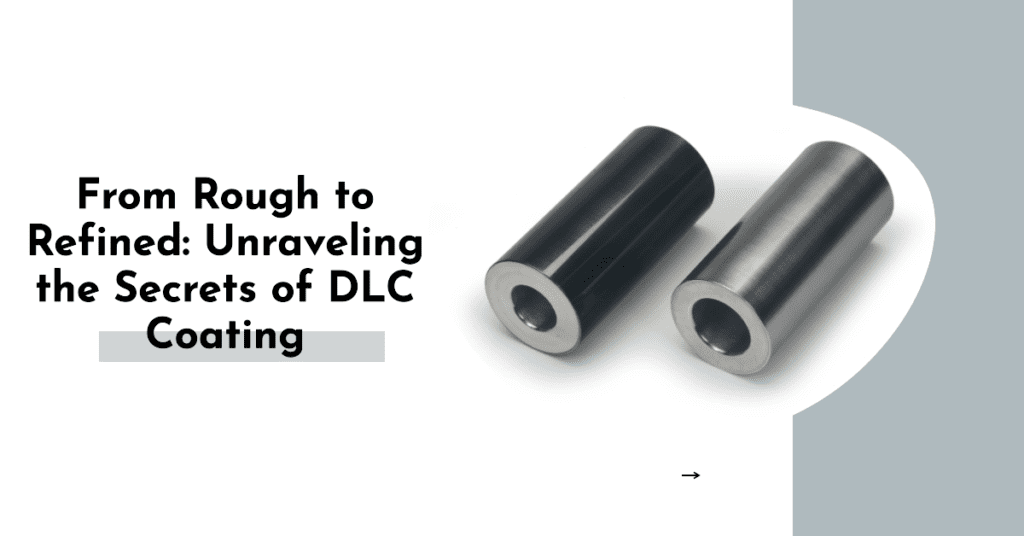
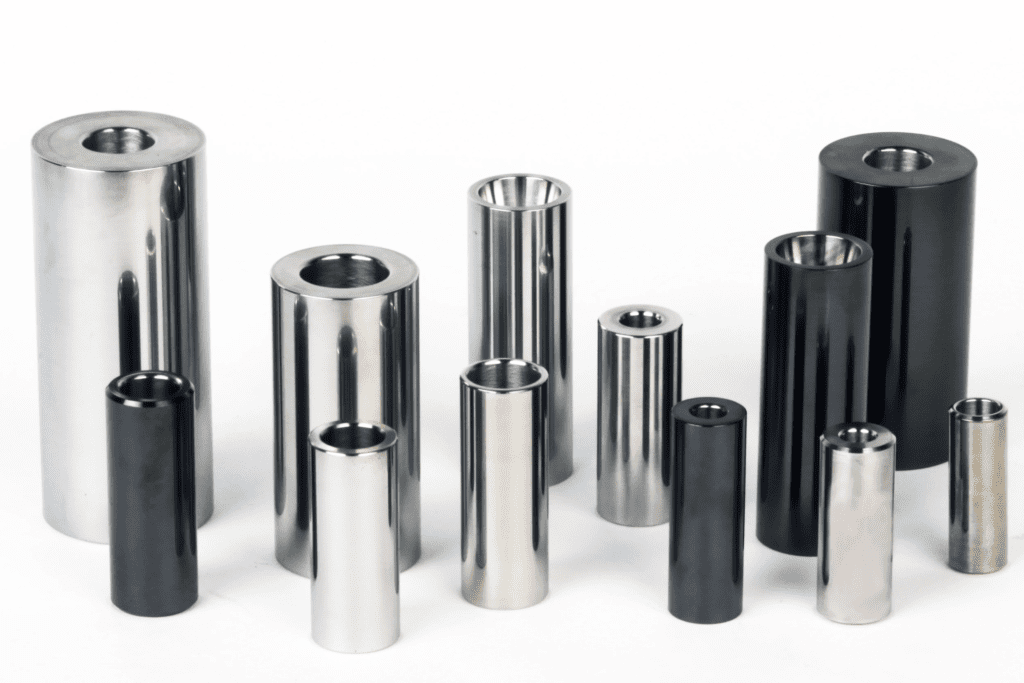
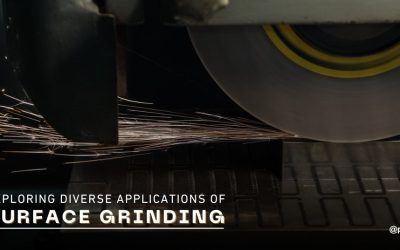
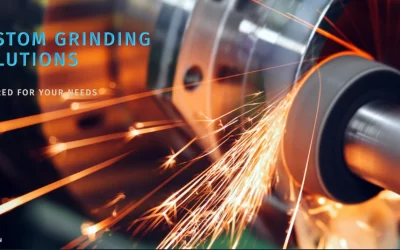
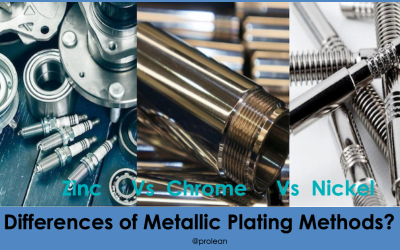

0 Comments